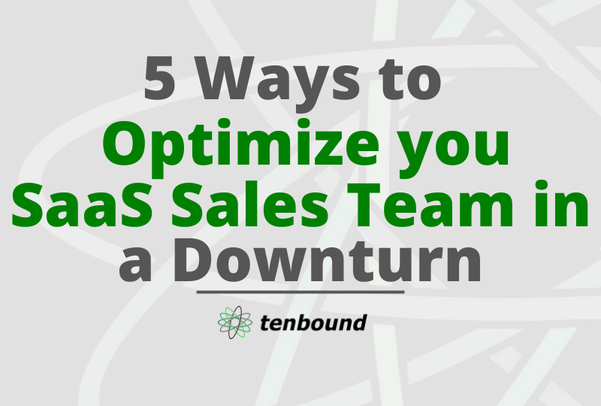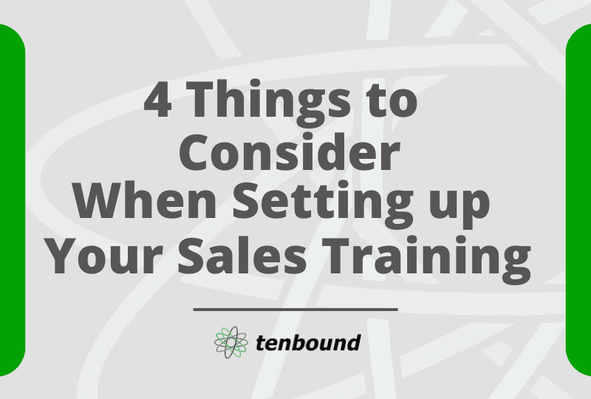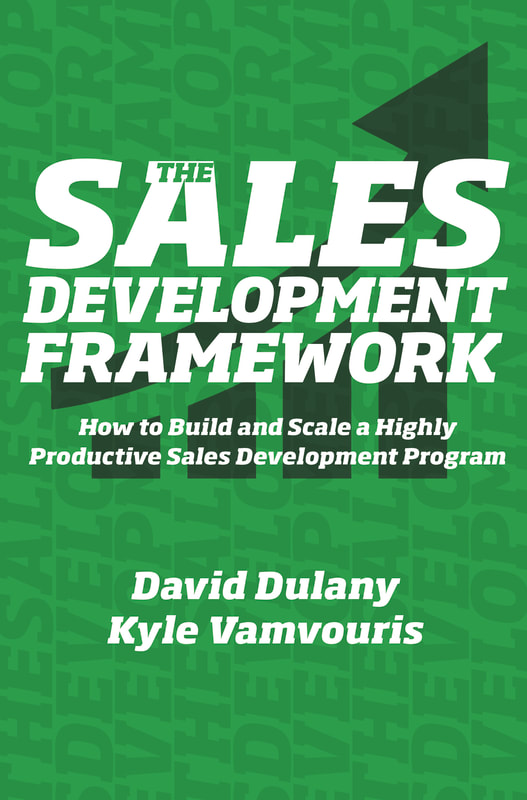Top 20 Paying SDR Teams in 2022
9/29/2022
Comments
There’s a reason that “breaking into tech” is trending right now. Aside from the flexibility and the growth potential, employees are attracted to high earning potential. Here we’ll share 20 companies that rank with some of the highest On target earnings (OTE). In previous years, SDR salaries varied greatly based on location, but because of the pandemic and remote work, we are starting to see a leveling across geographies (location is starting to have less of an impact on salary).
Notable mentions
This is just a starting point. While the OTE is high, it’s important to check to see what the average total compensation is and what percentage of reps are hitting quota. To investigate which company is performing well, check out our Free: Job Interview Questions Cheat Sheet for SDRS. This will help you think about some of the top questions that you can ask during an interview. Note: We’ve sourced this data publicly. This is just a starting point and doesn’t take into account seniority. Sources: https://compgauge.com/salaries/sdr/ https://salestrax.com/blog/companies-paying-software-salespeople-the-most Want to get into tech sales? Here’s how you do it...
Breaking into tech is not always easy, but it’s not impossible. While many believe that you need to have a technical background to be in tech, we’re here to tell you about a lesser known way to break into this industry. And the cool part is that you can access it without any previous experience. Yup, we are talking about tech sales. And don’t worry, it’s not the used car salesperson that you are used to thinking about when you think about sales. This is one of the faster growing job sectors in 2022. What is Tech Sales? Tech sales is generally seen as the sale of technology to other companies or customers. Most people often start their career in tech sales as a sales development representative or business development representative. These professionals will prospect for new clients and respond to inbound leads when they’re purchasing new products. They identify and create new businesses in addition to providing support for inbound inquiries. The day to day also includes cold calling and sending emails with the goal of qualifying customers and booking a meeting for the account executive. Huge demand As the tech industry grows, there’s a huge demand for non technical roles to support the marketing, sales and support of the customers. This is where the sales team comes into play. There is no shortage of sales jobs available now (despite all of the recent layoffs). We see the demand still being very high and the overall industry growing at an alarming rate. We are also seeing that tech sales continue to be a financially lucrative career path. While the average salary for a tech sales representative will vary, we see that the average starting salary for a sales development rep to be about $75,000. More than anything, because most tech companies are smaller, they offer a lot of opportunity for advancement and career growth. Now, let's transition into how to get started with your tech sales career. Updating Your Resume Just like any profession, you need to prepare a stellar resume for your job search. Updating your resume to match the company and role is always a given, no matter which industry you are in. However, in a tech sales job, you want to show transferable skills along with data driven successes. Most recruiters expect that you won't have any experience, so come prepared to tell your story based on the research you’ve done and why you want to transition into a tech sales career. If you feel like you need additional knowledge, you can always check out the different sales bootcamps and certifications around (some paid and some free). Working to complete one of these helps to signify that you are serious about breaking into tech and show a level of grit. Job Search Process Before you begin to submit your resume to companies, it’s important to know what type of companies you’d want to be a part of. You should be able to answer questions like these:
After you’ve gone through these questions, you should create a prospect list of companies you’d like to pitch. This way, you’ll be able to prioritize those you find the most attractive. The next step is to strategically reach out and network with these prospects without seeming desperate. You’ll also want to make sure that your LinkedIn profile is up to date so that employees take you seriously. Most companies have a referral fee. That means that the employee will get a referral bonus if they introduce a candidate to the company and they get the job. This is why networking is so important. Connect with employees on LinkedIn and join mutual group chats like on Twitter or mutual Slack groups (e.g Sales For The Culture,Vendition, SDReady, TenboundPlus) Interview Prep When preparing for your interview, one of the most important things you can do is investigate the company’s upcoming projects. Therefore, you’ll be prepared to provide valuable insights to the company on what products they can utilize to ensure their project’s success. At the basic level, be sure you know the CEO’s name. Furthermore, research relevant leadership teams and offer to reach out to them in order to provide relevant product information pertaining to their projects. If you’ve come prepared, you’re already off to an excellent start. Find out what kind of person the company is looking for in terms of traits and values. Understanding the company’s core values is a great place to start. You can take this one step further by practicing sharing what those core values mean to you. Nailing the Interview Remember, you’re still applying for a sales position so showcase your skills during the interview. Stay calm and keep control of the narrative. Teams love when you answer questions in a concise and articulate manner. Some managers value thoughtfulness, curiosity and grit. Teamwork is another major trait that is useful. Oftentimes these are asked about in behavioral interviews. These looks like; “tell me about a time when you. . .”. Feel free to go on that company’s Glassdoor page and research some of the top questions asked during interviews. Practice, practice, practice. More than anything, stay consistent with your search. Make a plan, seek out help, and learn as much as you can after each interview. Transitioning into tech won’t always be easy, but it can be worth it. These are proven steps that we’ve seen work over the last 5 years. If you are interested in learning more about the industry or want to check out an SDR course, take a look here. Most people don’t have a plan for their sales training. Here are four ways to fix that.
Companies spend over $70 billion on training and an average of $1,459 per salesperson annually. Yet, these trainings are nowhere as effective as leaders would like them to be. To increase effectiveness, retention, and performance, sales trainers should draw from the best practices of learning and design professionals. Here are four ways to incorporate better planning into your training:
Once you’ve identified the purpose of the training, it’s now time to ask yourself what kind of training it will be. To do this, you will need to decide the gap between where the sales reps are today compared to where you want them to be. For example, it could be a knowledge or skill gap. These are the most popular ones. Obviously, training to overcome a knowledge gap is much different from training to overcome a skill gap. Lastly, in this early phase, you want to clearly state, in two sentences or less, the desired outcome of the training. You should be able to fill in the blank here: “After the end of the training, the reps will be able to __________________.” 2. Plan the content and flow of the training After you’ve decided on the purpose of the training, the gap you want to cover, and the desired outcome, now it’s time to put the content together. The first step to doing this is to brainstorm the resources that you or your reps may need. Are there worksheets, videos, or templates that you already have, that you can leverage? And if not, does it make sense to build these out? Are there other people within your organization that might have insights into what else might be needed for the training? It could be your enablement person, your marketing team, or even your reps. Leverage the different stakeholders to start getting buy-in with the training. You’ll then want to consider the best format for the training. This is very important because the training methods will change depending on if it’s in person, virtual or hybrid. Think about your content and how it might be effective depending on the medium. Live role play is often way more engaging in person. On-screen polls are great in a virtual/hybrid environment. Attention span is way shorter online, and trainees get more easily distracted. These are all things to consider when planning the content. We’ve seen that when you think about these things and try your best to incorporate them into your training design, then your content will be more effective. A tip that we use regularly is to complete half the training, then share it with other stakeholders to get feedback. This way, you get early feedback before you get too far into the completed program. 3. Training time On the training day, always ensure you have the necessary equipment. There’s nothing worse than having a “technical difficulty”. This could delay the training and put the attendees in the wrong frame of mind. Before you begin, you’ll want to set the stage. In fact, we recommend sending out at least two notices ten days before the event. This should include the proposed agenda and learning objectives. This is a great way to start getting buy-in. You’ll always want to think about how you’ll keep the trainees engaged. What questions will you ask? What breakout sessions will you have? What polls might you do? Again, this all depends on the learning gap that you are trying to bridge. It’s best to take some time beforehand to think about your audience. If you know everyone in the group, you’ll generally have a good idea of the sales reps who will overshadow and have a tendency to take over the meeting, compared to the reps who never talk during group meetings. It’s essential to figure this out if you require engagement from the entire group. Always optimize for retention. How you present the information and the type of engagement you decide on, should always be optimized to help the reps retain as much of the training material as possible. 4. Solidify learnings Speaking of retention, before you show up on the training day, take a few minutes to think about how you will test the effectiveness of your training. In other words, how will you know if your training accomplished what you set out to accomplish? For most people, you might see an increase in sales or an increase in pipeline generated. But those might take a long time to see. The best way to see how effective the training was, is to test to see whether there’s a change in behavior with the reps. If it’s a knowledge gap that you were trying to fill, you could use a simple quiz. If it’s a skill gap, you could do role plays or “ride along” on sales calls. We see too much training that has no follow-up. At the end of the day, this is what truly matters; Did the training benefit your team the way you wanted it to, and did you have a way to verify that? If you are interested in learning more about how to plan an effective sales training session, check out our Free Sales Training Checklist here: Sales Training Checklist You see it all the time. The CEO has a vision and OKRs for the company, yet John on the Customer Success team doesn't know how it matters to his role.
It’s like the sales leader who is asking for more marketing-sponsored webinars and events, while the marketing team is more focused on traditional collateral like one pagers, Google ads, and pitch decks. Each department goes off pursuing its individual goals, only ever sharing results at the end of the quarter. And then it’s too late to make adjustments. These companies should start to consider making structural changes that better align the organization around a single source of truth and shared goals. But how? What is Revenue Alignment? In our recent article highlighting common themes from our upcoming conference, we leverage John Moore’s definition of Revenue alignment as “a customer-centered approach to business success. It places a bonus on creating measurable outcomes, delivering solutions that customers adopt, and a high degree of collaboration between customer-facing teams.” Here we will dive a bit deeper into the importance of revenue alignment, some pitfalls to avoid, and a couple of ways to fix them. The goal of revenue alignment is to improve the customer experience your customer receives from your team from start to finish. As you can imagine, this involves sales leaders, marketing, customer success, HR, Finance, and enablement. Each company must work really hard to remove any friction in the process. As we’ve noted, greater alignment across the organization shows great benefit. Research showed that organizations that “maintain a focus on alignment achieve up to 19% faster revenue growth and up to 15% higher profitability.” Unfortunately, few teams ever get there. Based on our research, here are some ways that prevent companies from getting the revenue growth that they desire. Problems of revenue mis-alignment:
The good news is that there is hope. We’ve seen some companies turn things around in just a week. While we can’t promise such a fast result, we can help you on your journey of revenue alignment. And yes, this will always be a process, a journey, and not a one-time event. How are some ways to align your revenue teams:
As we’ve shown, aligning your revenue teams can provide a huge lift in profitability. As teams struggle with data and organizational silos, misalignment will result in a negative impact on productivity and, ultimately, revenue growth. To learn more about how to start this process for your team, come join some of the Top Minds in Revenue Alignment on September 8th at Tenbound’s next Virtual Conference! At this free event, we’ll cover everything you need to rev up your cross-functional, go-to-market teams by synchronizing pipeline and revenue generation. Attendees will learn from top names in the industry on a strategic and tactical level how to actually do Revenue Alignment vs just talking about it. Focusing on alignment can increase pipeline and revenue, and enhance their careers as revenue professionals. For more info and free registration click here. In The Sales Development Framework, David Dulany and Kyle Vamvouris lay out a proven approach detailing how to start, lead, manage, and accelerate your Sales Development program.
Whether you are a seasoned executive who needs to jumpstart an existing program, a Manager running a team, an aspiring Team Lead, or a Sales Development Representative (SDR) who wants to step into a leadership role, this book will help you develop a course for success with your team, in your company, and your career! |
Blog Archives
November 2023
September 2023
December 2022
November 2022
October 2022
September 2022
August 2022
July 2022
June 2022
May 2022
February 2022
January 2022
December 2021
November 2021
October 2021
September 2021
July 2021
June 2021
May 2021
February 2021
January 2021
October 2020
September 2020
June 2020
May 2020
April 2020
March 2020
January 2020
December 2019
November 2019
September 2019
August 2019
June 2019
May 2019
March 2019
February 2019
November 2018
October 2018
July 2018
April 2018
March 2018
February 2018
November 2017
October 2017
September 2017
June 2017
May 2017
April 2017
March 2017
February 2017
January 2017
September 2016
August 2016
May 2016
September 2015
March 2015
February 2015
January 2015
Categories
All
Book
Boost Sales
Career
Coaching
Cold Calling
Communities
Conference
COVID-19
Infographic
Job
Leaders
Leads
Management
Market
Outsourcing
Pandemic
Podcast
Psychographics
Sales Development
SDR
Seminar
Social Media
Team
Technology
Trade Shows
Training
Trends
|






